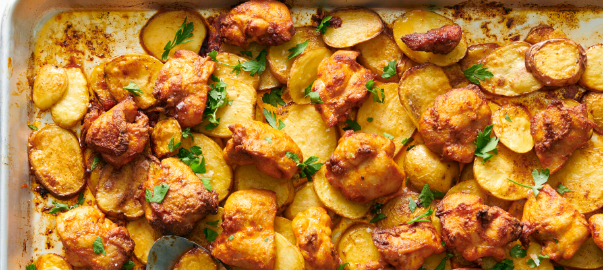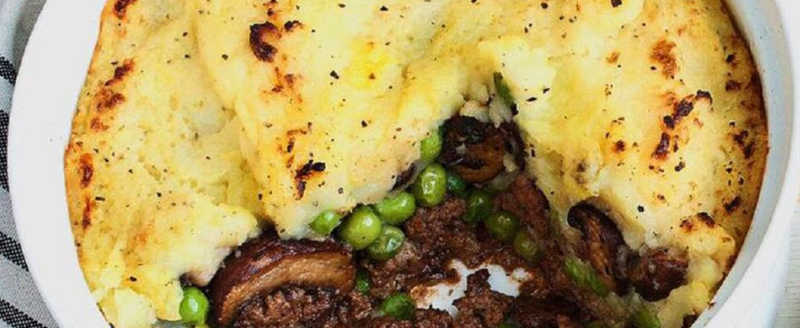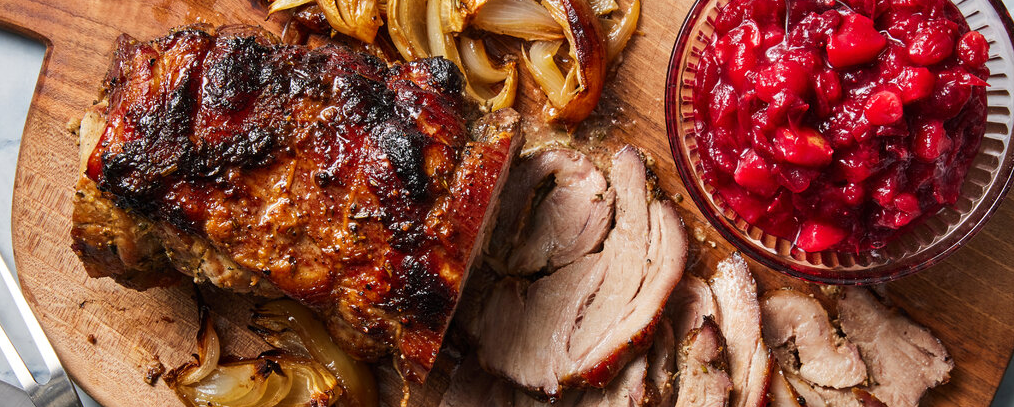Boneless Pork Ribs in Slow Cooker
Boneless Pork Ribs in a Slow Cooker: Step-by-Step Recipe, Cooking Time, and Sauce Ideas

As a chef, one of the most satisfying things I’ve discovered is how forgiving and flavorful boneless pork ribs become in a slow cooker. Unlike traditional ribs that need a smoker or careful grilling, boneless ribs—often cut from the pork shoulder—benefit from low, moist heat and long cooking times. The slow cooker makes this process nearly effortless.
- Why Boneless Pork Ribs in a Slow Cooker Work So Well
- Essential Ingredients and Tools to Get Started
- Prepping the Pork Ribs for Best Flavor and Texture
- Step-by-Step: How I Cook Boneless Pork Ribs in a Slow Cooker
- Cooking Time and Temperature Table
- Making Boneless Ribs in the Oven
- Can You Make Them in a Pressure Cooker or Instant Pot?
- Stovetop Version: A Good Alternative with a Dutch Oven
- Microwave Method (Only If You Must)
- My Favorite Sauces to Pair with Boneless Pork Ribs
- Seasonings That Bring Out the Best in Pork
- Common Mistakes to Avoid When Cooking Boneless Pork Ribs
- Creative Variations That Work Every Time
- Serving Ideas for a Complete Meal
- How to Store and Reheat Without Losing Flavor or Texture
- Plating Tips to Make Boneless Ribs Look as Good as They Taste
- How to Repurpose Leftovers into Delicious New Dishes
- FAQ: 15 Real Questions I Get About Boneless Pork Ribs (And My Honest Advice)

Why Boneless Pork Ribs in a Slow Cooker Work So Well
This method works especially well for beginners. It requires no searing, no basting, and no complicated technique. Yet the result is deeply tender meat, infused with whatever seasoning or sauce you’ve chosen. It’s a hands-off approach that delivers restaurant-quality flavor—if you follow a few key steps.
Essential Ingredients and Tools to Get Started
For this recipe, I keep things straightforward but flavorful. Here’s what I use:
Ingredients:
- 2 to 3 pounds boneless pork ribs (country-style, shoulder cut)
- Salt and black pepper
- 1 tablespoon garlic powder
- 1 teaspoon onion powder
- ½ teaspoon smoked paprika
- 1 cup barbecue sauce (store-bought or homemade)
- ¼ cup apple cider vinegar or broth (optional for acidity and moisture)
Tools:
- 6-quart slow cooker
- Tongs
- Cutting board and knife
- Measuring spoons
- Instant-read thermometer (optional but highly recommended)
These simple tools and ingredients set you up for success, especially if you’re new to slow cooking.
Prepping the Pork Ribs for Best Flavor and Texture
Before I place anything in the slow cooker, I start by trimming any large chunks of surface fat from the boneless ribs. These cuts often come with irregular shapes, so I try to keep them fairly uniform in size to ensure even cooking.
Next, I season the ribs liberally with salt, pepper, garlic powder, onion powder, and smoked paprika. I sometimes let the seasoned meat sit at room temperature for 15–20 minutes before cooking—this helps develop better flavor and lets the meat relax.
There’s no need to sear the meat for this recipe (though you can if you want added depth). The slow cooker will build flavor naturally over the hours it simmers.

Step-by-Step: How I Cook Boneless Pork Ribs in a Slow Cooker
Once seasoned, I layer the ribs in the slow cooker in one or two even layers, trying not to stack them too tightly. I pour a small amount of broth or apple cider vinegar in the base for extra moisture and acidity—this step is optional, but I recommend it.
Then I drizzle about half the barbecue sauce over the ribs. The other half I reserve to brush on during the final hour or after cooking.
I cover the slow cooker and cook the ribs on Low for 7–8 hours or High for 4–5 hours, depending on my schedule. I avoid opening the lid during cooking, as that drops the temperature and slows the process.
Once done, the ribs should be fork-tender. I use tongs to remove them gently and place them on a tray. If I want a thicker glaze, I reduce the cooking liquid in a saucepan and brush the ribs with it before serving.
Cooking Time and Temperature Table
| Setting | Temp (approx) | Time | Chef’s Note |
| Slow Cooker – Low | ~190°F (88°C) | 7–8 hours | My preferred setting for tenderness |
| Slow Cooker – High | ~300°F (149°C) | 4–5 hours | Great if you’re short on time |
| Internal Temp Goal | 195–205°F | Until fork-tender | Higher than standard pork cuts |
Boneless ribs are at their best when cooked beyond 165°F—closer to 195–205°F—to break down connective tissue and become truly tender.
Making Boneless Ribs in the Oven
When I can’t use a slow cooker, I replicate the technique in the oven. I place the ribs in a baking dish, cover tightly with foil, and bake at 300°F (149°C) for 2½ to 3 hours. Then I remove the foil, brush with more sauce, and broil for 3–5 minutes for a sticky, caramelized finish.
The oven version works beautifully, but it requires more attention and heating the whole kitchen—less ideal in summer or tight kitchens.
Can You Make Them in a Pressure Cooker or Instant Pot?
Yes, and I’ve done it often when short on time. I place the ribs on the trivet in the Instant Pot with ½ cup broth. I pressure cook on High for 35–40 minutes, followed by natural release for 10 minutes, then finish with a quick release.
Afterward, I remove the ribs and simmer the sauce using sauté mode to thicken. The result is nearly as tender as slow cooking—but much faster.

Stovetop Version: A Good Alternative with a Dutch Oven
If you don’t have a slow cooker, try a Dutch oven on the stove. I layer the ribs with sauce and broth, cover, and cook on low heat for about 2½ hours, checking occasionally to avoid drying. I finish uncovered for 15 minutes to thicken the sauce.
The result is rich and satisfying. I use this method when I want more caramelization or can’t wait all day for the slow cooker.
Microwave Method (Only If You Must)
Microwaving pork ribs is not my preferred method—it sacrifices texture. But if you’re reheating leftovers, slice the ribs, place in a dish with a splash of sauce or broth, cover with a microwave-safe lid or damp towel, and heat at 50% power in 1-minute intervals.
Cooking raw ribs from scratch in a microwave isn’t something I recommend—it leads to dry, uneven results.
My Favorite Sauces to Pair with Boneless Pork Ribs
I’ve made these ribs with dozens of sauces. Classic barbecue sauce (sweet, smoky, and tangy) is the default, but I often experiment. A spicy chipotle-honey glaze works great. For Asian-inspired ribs, I use hoisin, garlic, soy sauce, and a splash of rice vinegar.
Mustard-based sauces (like Carolina-style) bring brightness, while balsamic reductions add depth and elegance. The slow cooker absorbs whatever flavor you use, so don’t be afraid to get creative.

Seasonings That Bring Out the Best in Pork
I keep the seasoning simple: garlic powder, onion powder, paprika, black pepper, and salt. Occasionally, I add cumin, chili powder, or mustard powder depending on the sauce I’ll use. These ribs don’t need complicated rubs—just balanced, layered flavor.
If you use a sweeter sauce, balance with a little acidity (like vinegar or citrus). If your sauce is vinegar-forward, round it out with a touch of honey or brown sugar.
Common Mistakes to Avoid When Cooking Boneless Pork Ribs
In my early days as a chef, I made every possible mistake with boneless pork ribs. These cuts can be incredibly tender and flavorful—but only if handled correctly. The most frequent mistake I’ve seen is undercooking. Unlike pork chops, these ribs come from shoulder meat and are full of connective tissue. If you stop cooking at 165°F, they’ll be tough and chewy. To reach that fall-apart texture, you need to push the internal temperature closer to 195–205°F (90–96°C). That’s when the collagen breaks down and turns into silky gelatin.
Another big error is adding too much liquid. I’ve watched cooks submerge their ribs entirely in broth or sauce, expecting more moisture. But in a slow cooker, liquid doesn’t evaporate—it accumulates. The result? Watery ribs and diluted flavor. You only need a little broth or vinegar at the bottom—maybe half a cup.
Stacking too many ribs on top of each other is another issue. Heat can’t circulate evenly that way, so some ribs end up overdone while others are still firm. I always layer in one or two even layers and avoid cramming the pot full.
And finally—don’t skip the resting period. Just like with steak, letting the ribs rest for 10 minutes after cooking allows the juices to redistribute and the meat to firm up just enough to slice cleanly.
Creative Variations That Work Every Time
Boneless pork ribs are incredibly versatile. I’ve created dozens of variations over the years—some inspired by travel, others by pure experimentation. One of my go-to spins is Asian-style ribs. I cook them with soy sauce, garlic, ginger, and a splash of rice vinegar, then finish with sesame oil and scallions. It’s bold, umami-rich, and perfect with rice or noodles.
I’ve also made Cuban mojo ribs, using orange juice, lime, garlic, and oregano. The acidity cuts through the richness of the pork beautifully, and the citrus creates an aromatic, almost tropical aroma as it slow-cooks.
Another favorite is apple-bourbon ribs. I add apple cider, brown sugar, Dijon mustard, and a dash of bourbon. After cooking, I reduce the sauce until syrupy and brush it over the meat. It’s a hit at fall dinners and weekend gatherings.
Sometimes, I keep it minimal and rustic: salt, pepper, rosemary, and crushed garlic. Let the meat speak for itself. The key to success with any variation is balance—rich pork needs acidity, sweetness, or spice to shine.

Serving Ideas for a Complete Meal
Over the years, I’ve learned that how you serve your ribs is just as important as how you cook them. A good supporting cast makes the whole meal shine. When I serve ribs as a hearty main, I go with buttered mashed potatoes and roasted Brussels sprouts or charred carrots. The richness of the pork pairs beautifully with earthier vegetables and creamy textures.
For something lighter, I’ll plate the ribs over steamed jasmine rice or couscous, and add a citrusy slaw on the side. The acid helps balance the meat’s natural fattiness.
If I’m feeding a crowd, I’ll shred the ribs and pile them onto toasted brioche buns, then top with pickled onions and homemade coleslaw. That sandwich never lasts long.
In summer, I slice cold ribs and toss them with arugula, grilled peaches, and balsamic glaze for a refined, unexpected salad. Boneless pork ribs are incredibly flexible—you can make them rustic or elegant depending on the mood.
How to Store and Reheat Without Losing Flavor or Texture
After the last bite is served, proper storage becomes essential. I let the ribs cool for about 30–45 minutes at room temperature, uncovered, to prevent condensation in the container. Then I store them in an airtight container along with a few spoonfuls of their cooking liquid or sauce. This extra moisture keeps the meat tender when reheated.
For refrigeration, they’ll keep well for up to 4 days. For freezing, I wrap them tightly in foil or vacuum seal and store for up to 3 months. Before freezing, I usually divide the ribs into individual portions—this makes future meals faster and more convenient.
To reheat, my favorite method is low oven heat (300°F or 150°C) for 20 minutes, covered with foil. I add a splash of broth or sauce before sealing. This gently warms the meat without drying it out. On the stovetop, I reheat ribs in a lidded skillet with a little broth over low heat. I only use the microwave if I’m in a hurry—and when I do, I go with 50% power in short bursts, covered with a damp towel.
Reheating isn’t just about getting it hot—it’s about restoring the texture and flavor you worked so hard to build.
Plating Tips to Make Boneless Ribs Look as Good as They Taste
Ribs may be a humble cut, but they can be served with elegance. When I plate whole boneless ribs, I first reduce some of the cooking juices or sauce into a thick glaze. I brush the ribs with this glossy finish just before serving—it adds color and sheen.
I place the ribs at a slight angle on the plate, then arrange the sides in visual contrast: mashed potatoes in a neat scoop, greens in a tight pile. Garnishing with fresh herbs like thyme or parsley brings brightness and color.
If serving shredded ribs, I stack them in a small mound or use a ring mold to give them shape. A drizzle of sauce around the meat—not over it—keeps the plate clean. And don’t forget the plate itself: a wide, shallow bowl or white ceramic dish makes even rustic food look refined.
A good plate tells a story. It says you cared—from the cooking to the final flourish.
How to Repurpose Leftovers into Delicious New Dishes
Leftover boneless ribs are one of my favorite ingredients for “next-day creativity.” The meat holds its flavor and texture well when properly stored, and with a little imagination, it can be transformed into brand-new meals.
One of my favorite uses is tacos. I shred the meat, reheat it with a splash of lime juice and hot sauce, and serve in warm corn tortillas with avocado, pickled onions, and a bit of crumbled queso fresco. It’s fast, flavorful, and never feels like leftovers.
I also love making pulled pork hash. I dice some potatoes, sauté with onions and peppers, then add chopped ribs and let everything crisp up in a skillet. Top it with a fried egg and you’ve got a brunch-worthy plate.
For something lighter, I’ll toss shredded pork into a mixed green salad with citrus segments, toasted nuts, and a mustard vinaigrette. It’s hearty but clean.
When I want comfort food, I stir the meat into pasta with a creamy tomato sauce, or layer it in a grilled cheese sandwich with cheddar and caramelized onions.
Leftovers are not a limitation—they’re a head start. And pork ribs, when well cooked, only get better with time.
FAQ: 15 Real Questions I Get About Boneless Pork Ribs (And My Honest Advice)
Do I need to sear boneless pork ribs before slow cooking?
I’ve tried it both ways, and while searing does build an extra layer of flavor, I can say that it’s optional—not essential. For quick prep, I often skip searing and still get great results, thanks to the long cooking time. But when I want a deeper, more complex flavor—especially for a fancier meal—I’ll take a few extra minutes to brown the ribs on all sides before slow cooking.
Can I cook frozen boneless ribs in the slow cooker?
I’ve tested it, but I don’t recommend it. From a food safety standpoint, frozen meat can take too long to reach a safe internal temperature in a slow cooker. I always thaw the ribs overnight in the fridge before cooking. It ensures more even cooking and a better final texture.
How do I know when boneless ribs are done?
On my experience, they’re ready not just when they reach 165°F, but when they hit 195–205°F and become fork-tender. That’s when the collagen breaks down and the meat starts to fall apart. I usually test by sticking a fork in—if it slides in with no resistance, they’re done.
What’s the best liquid to use in the slow cooker?
I often use a splash of apple cider vinegar, broth, or even cola depending on the flavor profile. I recommend just enough to coat the bottom—maybe ¼ to ½ cup. You don’t want to submerge the ribs; they’ll release their own juices as they cook.
Can I use store-bought barbecue sauce?
Absolutely. I do it all the time, especially on busy days. The trick is to use half at the beginning and reserve half to add at the end, once the cooking is done. This way, the final flavor is bold and fresh—not flat from overcooking.
Is it okay to cook on High instead of Low?
Yes, and I’ve done it many times. Just know that cooking on Low (7–8 hours) gives more even tenderness. On High, I go 4–5 hours max and check often. It’s a good option if you’re short on time, but Low still gives you the best result for fall-apart texture.
What cut of meat is used for boneless pork ribs?
Most of the time, they’re cut from the pork shoulder—not actual rib meat. This means they’re great for slow cooking because of the fat and connective tissue. I always check the label or ask the butcher to confirm. Avoid loin cuts—they’re too lean for this method.
Can I overcook pork ribs in a slow cooker?
Surprisingly, yes. If you leave them too long—especially on High—they can get mushy. I recommend checking after the minimum suggested time, and not going beyond 8–9 hours on Low unless you’re keeping it on warm mode.
What’s your go-to spice mix for boneless ribs?
I use a blend of salt, pepper, garlic powder, onion powder, smoked paprika, and a touch of brown sugar. Sometimes I add mustard powder or cumin depending on the sauce. This base works with nearly every sauce I’ve tried, from BBQ to teriyaki.
Can I make these ribs spicy?
Definitely—I’ve added chipotle powder, cayenne, hot sauce, even sriracha into the mix. Just be careful not to overwhelm the pork’s natural sweetness. On my experience, combining heat with a little honey or brown sugar gives the best balance.
What can I serve with boneless ribs besides mashed potatoes?
I’ve paired them with rice, creamy polenta, baked beans, grilled veggies, and even mac & cheese. When I want something lighter, I go for slaw, citrusy greens, or roasted cauliflower. It all depends on the vibe you’re after—comfort or clean.
How long will leftovers last in the fridge?
I usually keep them up to 4 days, stored with some of the sauce in a sealed container. The sauce helps maintain moisture. If I know I won’t use them in time, I freeze them—no problem for up to 3 months.
What’s the best way to reheat boneless ribs?
On the stove, in a skillet with a lid and a bit of broth or sauce—that’s my go-to. In the oven, I cover them with foil and warm at 300°F for 20 minutes. If I have to use the microwave, I do 50% power and short intervals to avoid drying them out.
Can I shred the ribs for tacos or sandwiches?
Yes, and I do this all the time. After slow cooking, I let them cool slightly, then shred with two forks. They’re perfect for sliders, burritos, rice bowls—you name it. Just re-season or add fresh sauce before serving.
What’s one tip that makes all the difference?
On my experience, it’s to let the ribs rest after cooking and before serving. That 10-minute pause settles the juices and gives a cleaner slice. Also—always taste the sauce before serving. A squeeze of lemon, vinegar, or a dash of hot sauce at the end often makes it pop.




Post Comment